new posts in all blogs
Viewing: Blog Posts Tagged with: millbrook press, Most Recent at Top [Help]
Results 1 - 10 of 10
How to use this Page
You are viewing the most recent posts tagged with the words: millbrook press in the JacketFlap blog reader. What is a tag? Think of a tag as a keyword or category label. Tags can both help you find posts on JacketFlap.com as well as provide an easy way for you to "remember" and classify posts for later recall. Try adding a tag yourself by clicking "Add a tag" below a post's header. Scroll down through the list of Recent Posts in the left column and click on a post title that sounds interesting. You can view all posts from a specific blog by clicking the Blog name in the right column, or you can click a 'More Posts from this Blog' link in any individual post.
By:
Sue Morris @ KidLitReviews,
on 4/3/2015
Blog:
Kid Lit Reviews
(
Login to Add to MyJacketFlap)
JacketFlap tags:
Picture Book,
NonFiction,
Middle Grade,
biology,
Millbrook Press,
Books for Boys,
zoology,
naturalist,
Lerner Publishing Group,
Rebecca L. Johnson,
5stars,
Library Donated Books,
quirky animal defense mechanisms,
When Lunch Fights Back: Wickedly Clever Animal Defenses,
Add a tag
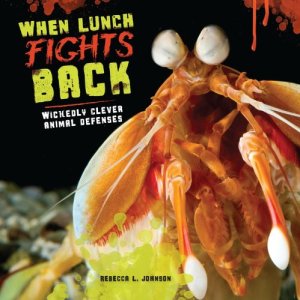 x
x
x
When Lunch Fights Back: Wickedly Clever Animal Defenses
Written by Rebecca L. Johnson
Millbrook Press 9/1/2015
978-1-4677-2109-7
Nonfiction Picture Book
48 pages Age 9 to 14
A Junior Library Guild Selection
“In nature, good defenses can mean the difference between surviving a predator’s attack and becoming its lunch. Some animals rely on sharp teeth and claws or camouflage. But that’s only the beginning. Meet creatures with some of the strangest defenses known to science. How strange? Hagfish that can instantaneously produce oodles of gooey, slippery slime; frogs that poke their own toe bones through their skin to create claws; young birds that shoot streams of stinking poop; and more.” [book jacket]
Review
“On Earth the challenge of survival is a real and serious business. In the wild, every living thing is constantly at risk of being eaten by something else.”
Life is a bed of strange abilities as explored in When Lunch Fights Back. These animals—and one plant—have incredible defense mechanisms. You will wonder what other odd defense mechanisms other animals might possess. I do. It also made me wonder why humans have limited natural defense abilities. Hitting, screaming, and kicking are all fine defenses, but wouldn’t it be fantastic to have some of these abilities.
1. Cover your predator with thick, slimy, goo. (Atlantic Hagfish)
2. Extend your fingers so the bones protrude through the skin like sharp claws. (African Hairy Frog)
3. Bulge out your eyes and shoot a deadly stream of blood into a predator’s mouth. (Texas Horned Lizard)
Stuff of science fiction? Nope. When Lunch Fights Back contains animals with these abilities and much more. This nonfiction picture book for older kids is a fascinating read. There is enough “yuck” to entertain kids and the author supplies the science behind those incredible abilities, making this a great adjunct text for science teachers. Author notes, a glossary, index, bibliography, and extra resources are included.

Johnson writes in a manner that should be accessible to most middle grade aged kids. She introduces researchers and scientist in the “Science Behind the Story” sections. There is so much to learn and see it just might develop a child’s interest in the natural word. If the title does not peak a child’s interest, the images will. The color photographs highlight the noxious defenses and info-boxes give additional information about each animal (scientific name, location, habitat, and size).
Still, would it not be terrific if humans could spew putrid contents at a predator, much like a fulmar? Or, and this is a tad gross, turn our other check and “shoot streams of foul-smelling feces” at an attacker, much like a hoopoe chick can do? If you had the ability to slime an attacker, like the hagfish (aka “snot eel”), I doubt anyone would mess with you.
When Lunch Fights Back: Wickedly Clever Animal Defenses is an amazing look into some crazy species. Kids will love this book and teachers can use that interest to bring out the zoologist, biologist, or naturalist in her (or his) students. While a tad gross, and most definitely with a yuck value of 9, kids will enjoy When Lunch Fights Back: Wickedly Clever Animal Defenses. This kid did!
x
WHEN LUNCH FIGHTS BACK: WICKEDLY CLEVER ANIMA DEFENSES. Text copyright © 2015 by Rebecca L. Johnson. Reproduced by permission of the publisher, Millbrook Press, an imprint of the Lerner Publishing Group, Minneapolis, MN.
x
Purchase When Lunch Fights Back at Amazon —B&N—Book Depository—Lerner Books.
—B&N—Book Depository—Lerner Books.
x
Learn more about When Lunch Fights Back HERE.
Meet the author, Rebecca L Johnson, at her website: http://www.rebeccajohnsonbooks.com/
Find more MG Nonfiction at the Lerner Publishing Group website: https://www.lernerbooks.com/
Millbrook Press is an imprint of Lerner Publishing Group.

Copyright © 2015 by Sue Morris/Kid Lit Reviews
Filed under:
5stars,
Books for Boys,
Library Donated Books,
Middle Grade,
NonFiction,
Picture Book Tagged:
biology,
Lerner Publishing Group,
Millbrook Press,
naturalist,
quirky animal defense mechanisms,
Rebecca L. Johnson,
When Lunch Fights Back: Wickedly Clever Animal Defenses,
zoology 







By:
Sue Morris,
on 8/20/2014
Blog:
Kid Lit Reviews
(
Login to Add to MyJacketFlap)
JacketFlap tags:
Children's Books,
Picture Book,
Poetry,
NonFiction,
Favorites,
children's book reviews,
Millbrook Press,
Irene Latham,
African animals,
Library Donated Books,
6 Stars TOP BOOK,
Top 10 of 2014,
Lerner Publishing Group Inc.,
Anna Wadham,
Add a tag
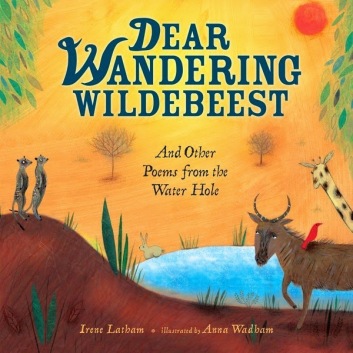 x
x
Dear Wandering Wildebeest: And Other Poems from the Water Hole
Written by Irene Latham
Illustrated by Anna Wadham
Millbrook Press 8/01/2014
978-1-4677-1232-3
Age 4 to 8 32 pages
x
x

x
x
x
x
“Welcome wildebeest
and beetle,
oxpecker and lion.
This water hole is yours.
It offers you oasis
beside its shrinking shores.
“Spend a day at a water hole in the African grasslands. From dawn to nightfall, animals come and go. Giraffes gulp, wildebeest graze, impalas leap, vultures squabble, and elephants wallow. Irene Latham’s gorgeous poems are accompanied by additional facts that provide further details about the animals and their environment. Imaginative illustrations from Wadham complete this delightful collection.”
Review
Dear Wandering Wildebeest, is composed of 15 poems about wild African animals, a glossary of possibly unusual words, and a section of advanced reading, enhanced by beautiful illustrations of the animals and the African land in which they live.
If you like giraffes, monkeys, lions, and elephants, you are in luck. There are also rhinoceros, small nightjars, vultures, marabou storks, oxpeckers, and, of course, wildebeest. Don’t worry, there are many more animals than that in this wonderful book. The pages look like the African Plains have jump onto the paper, leaving nothing bare. The beautiful skies change with the day, sometimes the dark blue of midnight or the rosy shade of dusk.
Some of the poems rhyme and some do not, but all are easy to read aloud. Impala Explosion swiftly jumps off the reader’s tongue.
“Wind lifts
grass shifts
eyes search
legs lurch
twig pop
grazing stops
ears twitch
tails hitch
peace shatters . . .”
—Impala Explosion, (partial poem) by Irene Latham © 2014
x
x
Kids will love the poems. They will understand them all, and any word that is foreign to them is most likely sitting in the glossary waiting to spread some understanding. If you like the aforementioned giraffes, Ms. Latham wrote a triptych in its honor. What is a triptych, you ask? I have no idea, but the glossary knows. Let’s check.
“triptych: a work of art divided into three sections”
That would be correct. The giraffe’s poem is divided into three sections:
Craving,
Caution, and
Courage.”
Feeling parched, the giraffe craves a drink. Giraffe’s must be cautious, as it has no idea what other animals will be at the water hole. It could be dangerous. To quench its thirst, the giraffe must be courageous and confident because other animals will pounce on a weak animal. Giraffes are cool creatures. If the poem does not convince you of this, read the information box in the lower left side of the spread.
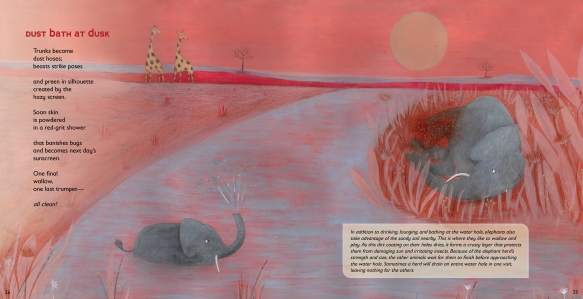
Each spread has an information box containing interesting things about the animal or animals illustrated. I really like the information the author/poet adds to the spread, much of it new information that I found fascinating. For instance, did you know the impala could jump as high as eight feet? Eight feet! That is high enough to clear the privacy fence in your backyard, if you have one, and have two feet between the top of the fence and the impala’s belly. How about this, in one year, the wildebeest travels—looking for food—more than 800 miles across the Serengeti. This is equivalent to you traveling across the state of Kansas, east to west (or west to east) twice, or the state of Rhode Island from north to south (or south to north) a whopping 20 times! The extra information is very interesting.
The illustrations are simply gorgeous. The African animals depicted in detail and the landscapes of various colors are easily as beautiful as the animals—except maybe snakes. I do not like snakes. If you do, they are covered and you will think they are beautiful. Check out each animal’s eyes. There is always something going on that draws their attention. (I think that darn snake is looking at me!) There is so much to see on each spread.
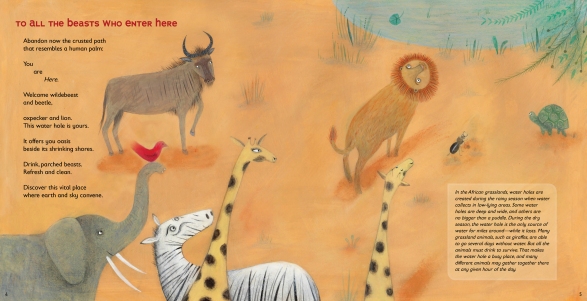
Dear Wandering Wildebeest is one of those picture books that will delight nearly 99% of those most who read its poems and view its lovely art. Kids, you will love the animals, the sometimes-quirky poems, the illustrations, and all the interesting side information about life at an Africa watering hole for the wild creatures that need it for survival. If you love poetry and animals, Dear Wandering Wildebeest is a book is for you. It is really that simple. With school right around the corner, Dear Wandering Wildebeest is perfect book for show and tell or light research for a book report on an African watering hole and the animals that depend upon it.
DEAR WANDERING WILDEBEEST: AND OTHER POEMS FROM THE WATER HOLE. Text copyright © 2014 by Irene Latham. Illustrations copyright © 2014 by Anna Wadham. Reproduced by permission of the publisher, Millbrook Press, Minneapolis, MN.
Purchase a copy of Dear Wandering Wildebeest: And Other Poems from the Water Hole at Amazon —B&N—Book Depository—Millbrook Press—your favorite bookstore.
—B&N—Book Depository—Millbrook Press—your favorite bookstore.
x
Learn more about Dear Wandering Wildebeest: And Other Poems from the Water Hole HERE.
Meet the author/poet, Irene Latham, at her website: http://www.irenelatham.com/
Meet the illustrator, Anna Wadham, at her website: http://annawadham.blogspot.com/
You can find more poetry at the Millbrook Press website: https://www.lernerbooks.com/
Millbrook Press is a division of Lerner Publishing Group, Inc.
x
Also by Irene Latham

The Sky Between Us

Don’t Feed the Boy
Read Review HERE.
Also by Anna Wadham

The Ant and the Big Bad Bully Goat
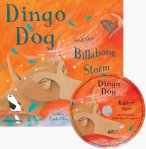
Dingo Dog and the Billabong Storm
x
x

x
x
Copyright © 2014 by Sue Morris/Kid Lit Reviews
Filed under:
6 Stars TOP BOOK,
Children's Books,
Favorites,
Library Donated Books,
NonFiction,
Picture Book,
Poetry,
Top 10 of 2014 Tagged:
African animals,
Anna Wadham,
children's book reviews,
Irene Latham,
Lerner Publishing Group Inc.,
Millbrook Press,
picture book,
poetry 







By:
Sue Morris,
on 6/20/2014
Blog:
Kid Lit Reviews
(
Login to Add to MyJacketFlap)
JacketFlap tags:
Children's Books,
Poetry,
NonFiction,
Favorites,
haiku,
children's book reviews,
Millbrook Press,
Brian P. Cleary,
lantern,
Lerner Publishing Group,
Library Donated Books,
6 Stars TOP BOOK,
Top 10 of 2014,
Andy Rowland,
Japanese poetry,
Add a tag
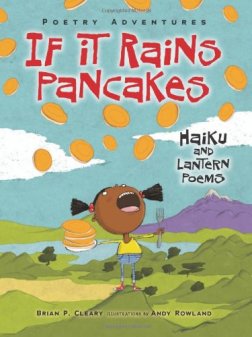 .
.
If It Rains Pancakes: Haiku and Lantern Poems 
by Brian P. Cleary
illustrated by Andy Rowland
Millbrook Press 1/1/2014
978-1-4677-4412-6
Age 7 to 10 32 page
.
“What is a haiku? It sounds like a sneeze. And isn’t a lantern a light source? Actually, they are two types of ancient Japanese poetry. Award-winning author Brian P. Cleary explains how each form works—and shows how these little poems can contain big surprises! If It Rains Pancakes is packed with poems to make you chuckle, puzzle, and ponder. And when you’ve finished reading, you can try your hand at writing your own haiku and lanterns!
“If it rains pancakes,
I’ll need no umbrella, just
syrup, fork, and plate.”
Opening
“Haiku is a short, Japanese form of poetry that has been around for more than four hundred years. That’s much longer than your teacher or your parents have been alive.”
Review
I like books that, even though written for a kid, teaches me something. I know a Haiku has 7 syllables in the first line, then 5 in the next, finishing with 7 in the third and final line. Everyone knows that, right? But, did you know that in Japan syllables are not what matters. Maybe they don’t even have syllables. In Japan, they count sounds and each Haiku has 17 sounds known as on (pronounced a faster than normal “one”). That I did not know, until I read If It Rains Pancakes. Traditionally, haikus are about nature, but Mr. Cleary takes liberties with this and writes Haikus on all sorts of kid-subjects: pets, pizza, and pancakes. I also love something else Mr. Cleary wrote,
“Poetry’s not a spectator sport, so try your hand at this ancient form, and be sure to have fun!”
I love fun as much as I love humor, so here is my haiku.
RAIN
It may rain kittens and pups.
It may rain water.
To be safe, watch where you step.
**I now challenge you to follow Mr. Cleary’s advice and write a haiku or a lantern (see below) in the comment section. I know there are lots of writers, poets, and aspiring writers and poets reading this blog. NOW is the time to show what you have!
Returning to the review: If you don’t like my haiku, Mr. Cleary wrote 20 for you in If It Rains Pancakes. Here are some of the titles, though many will not help you with the subject of the poem. Color Me Confused, City of Brotherly Lunch, The Mind and Yummy. There is one that is helpful to all of us not as poetically inclined as Mr. Cleary is. Kids will want to remember this one for when school resumes—much too soon.
HAIKU
When you’ve written one
without enough syllables,
you add words. Football.
The other half of If It Rains Pancakes is about Lanterns. This is all new to me. A lantern, or lanturne, is also Japanese. This poem has five lines. Line 1 is a 1-syllable noun and the subject of the poem. Line 2 “sheds light” (describes) the subject in two syllables. Line 3 has three syllables, line 4 has four, and line 5 has a 1-syllable word. The poem will look roughly like a lantern, hence the name. Mr. Cleary wrote 15 lanterns, all very cute, most very funny. Since I am a pet person and would have written a lantern about pets, and could not write one better than Mr. Cleary, the example I will share—by Mr. Cleary—is about a pet I know well.
Cat:
“Feed me.”
“Pet me too.”
“Feed me. Pet me.”
“Now.”
The illustrations, which play out the poems, are colorful and as crazy as the poem it represents. If the illustrations do not amuse you, I am lost for words. I love the images that perfectly match each poem. At the end of If It Rains Pancakes is a list of reference books to learn more about haikus and lanterns, and other poems, including one of the author’s, entitled “Rainbow Soup: Adventures in Poetry .” Finally there is a list of websites with more poetry activities, including one I had not heard of—but love the name—called Giggle Poetry at gigglepoetry.com
.” Finally there is a list of websites with more poetry activities, including one I had not heard of—but love the name—called Giggle Poetry at gigglepoetry.com
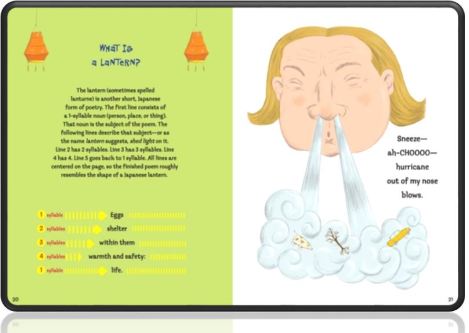
If It Rains Pancakes is a wonderful little book that packs a punch. Teachers would do well to have this on hand when teaching haikus or other Japanese poetry like lanterns. Kids will have fun learning about haikus and lanterns when reading these 35 mostly hilarious poems. Mr. Cleary is a master at teaching kids about writing of every type. If It Rains Pancakes upholds his genius.
IF IT RAINS PANCAKES: HAIKU AND LANTERN POEMS. Text copyright © 2014 by Brian P. Cleary. Illustrations copyright © 2014 by Andy Rowland. Reproduced by permission of the publisher, Millbrook Press, Minneapolis, MN.
Buy a copy of If It Rains Pancakes: Haiku and Lantern Poems at Amazon —B&N—Book Depository—Lerner Books—or your local bookstore.
—B&N—Book Depository—Lerner Books—or your local bookstore.
.
Learn more about If It Rains Pancakes: Haiku and Lantern Poems HERE.
Meet the author, Brian P. Cleary at his website: http://www.brianpcleary.com/
Meet the illustrator, Andy Rowland, at his website: http://andrewrowlandillustration.blogspot.com/
Find more books at the Millbrook Press website:
Millbrook Press is a division of Lerner Publishing Group: https://www.lernerbooks.com/
. .
.
Bookmarks (4) are available free HERE.
Also by Brian P. Cleary in 2014
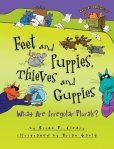
Feet and Puppies, Thieves and Guppies: What Are Irregular Plurals?
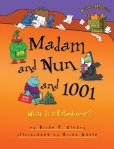
Madam and Nun and 1001: What Is a Palindrome?
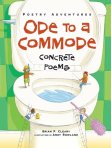
Ode to a Commode: Concrete Poems
-
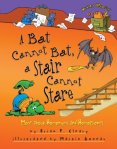
A Bat Cannot Bat, a Stair Cannot Stare: More About Homonyms and Homophones
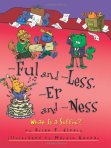
-ful and -less, -er and -ness: What Is a Suffix?
Review HERE
Also by Andy Rowland in 2014

Ode to a Commode: Concrete Poems
The Elves and the Shoemaker (November, 2014)
.
.

**PLEASE DON’T FORGET — SHOW YOUR STUFF! WRITE A HAIKU OR A LANTERN OR REALLY BLOSSOM AND WRITE BOTH IN THE COMMENTS! It is as easy as RAIN.
Filed under:
6 Stars TOP BOOK,
Children's Books,
Favorites,
Library Donated Books,
NonFiction,
Poetry,
Top 10 of 2014 Tagged:
Andy Rowland,
Brian P. Cleary,
children's book reviews,
haiku,
Japanese poetry,
lantern,
Lerner Publishing Group,
Millbrook Press,
poetry 







By:
Sue Morris,
on 5/26/2014
Blog:
Kid Lit Reviews
(
Login to Add to MyJacketFlap)
JacketFlap tags:
children's book reviews,
Laura Purdie Salas,
Millbrook Press,
water,
Lerner Publishing Group,
5stars,
Violeta Dabija,
Library Donated Books,
forms of water,
water properties,
Children's Books,
Picture Book,
poetry,
Favorites,
Add a tag
 .
.
Water Can Be . . . 
by Laura Purdie Salas & Violeta Dabija, illustrator
MillBrook Press 4/01/2014
978-1-4677-0591-2
Age 4 to 8 32 pages
.
“Water can be a . . . Thirst quencher. Kid drencher. Cloud fluffer. Fire snuffer. Find out about the many roles water pays in this poetic exploration of water throughout the year.”
Opening
“Water us water—
it’s puddle, pond sea.
When springtime comes splashing,
the water flows free.”
Review
Water Can Be . . . is the second Laura Purdie Salas picture book reviewed here at KLR. The first was A Leaf Can Be . . . (reviewed here) which is about all the things a leaf can be that we never think about or realized. In that same vain, Water Can Be . . . is about all the things we may not notice about water. Told in rhyming text, the story needs the illustrations, as the two together make the wonderful story of what Water Can Be . . .
There are a few things that water can become that I had not thought of. We all know that snow is water, rain is water, and my personal favorite, ice is water. Have you ever heard of a “woodchuck warmer?” Did you know that water heavily influences the woodchuck warmer? Me either. I had no idea what a woodchuck warmer is, or that water was involved, and honestly, the illustrations failed me on this. It looks like an animal sleeping under a blanket of leaves.
In the back of the book, the author wrote a guide to each thing water could be. Thanks to that guide, I can explain how a woodchuck warmer and water influence each other. Woodchucks burrow in the ground and hibernate. If not for the snowfall atop the leaves that lay upon the burrow opening, and across the land above the burrow, these winter homes would become tragically cold and the woodchucks would most likely not survive the winter. Water, now in the form of snow, acts as an insulator. That is one heck of a job for water and it works wondrously.
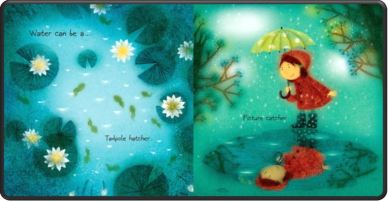
The illustrations are gorgeous, just as they were in A Leaf Can Be . . . but the author presents the water possibilities in a scattered manner. Spreads jump from a light image, say of two kids playing in a water sprinkler or fluffer clouds, to a ship at trouble in a storm or a firefighters putting out a forest fire, as birds quickly fly away, sometimes in the same spread. Most images are in shades of bluish-green, some darker than others. My favorite illustration is water as a picture catcher. A young girl looks at herself in the smooth surface of a little pond and sees a reflection of herself. The illustration is fantastic. I love that the facial expressions are nearly identical and the nice shade of red in the girl’s coat.
Each thing water can become is beautifully visualized so kids can instantly understand the two-word concepts presented, such as thirst quencher / kid drencher and home maker / ship breaker. Younger children will grasp most of the possibilities. Heck, even an adult can understand what water can be . . . well, maybe not all of the concepts.
Water Can Be . . . is a home and school library keeper. In schools, it is useful for teaching younger children about the elements—beginning with water—in its many forms, performing many life-affirming tasks. There are more uses than what Water Can Be . . . rhythmically covered. The author challenges the reader to find more on his or her own. What do you think Water Can Be . . .?
WATER CAN BE . . . Text copyright © 2014 by Laura Purdie Salas. Illustrations copyright © 2014 by Violeta Dabija. Reproduced by permission of the publisher, Millbrook Press, Minneapolis, MN.
Get a copy of Water Can Be . . . at Amazon —B&N—Lerner Publishing—your local bookstore.
—B&N—Lerner Publishing—your local bookstore.
*10% of author’s revenue is donated to WaterAid.org
.
Learn more about Water Can Be . . . HERE.
Meet the author, Laura Purdie Salas, at her website: http://www.laurasalas.com/
Meet the illustrator, Violeta Dabija, at her website: http://www.violetadabija.com/
Find books at the Millbrook Press website:
an imprint of Lerner Publishing Group: https://www.lernerbooks.com/
.
Also by Laura Purdie Salas
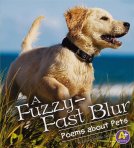
A Fuzzy-Fast Blur: Poems about Pets
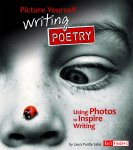
Picture Yourself Writing Poetry: Using Photos to Inspire Writing (See It, Write It)
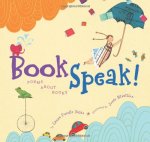
BookSpeak!: Poems About Books
Also by Violeta Dabija
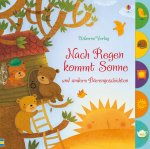
Nach Regen kommt Sonne und andere Bärengeschichten (After rain comes sun bears and other stories)
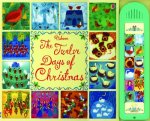
The Twelve Days of Christmas
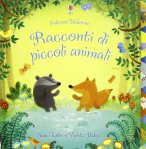
Racconti di piccoli animali. Racconti per la nanna (Stories of small animals. Stories for Bedtime)
.
.

Filed under:
5stars,
Children's Books,
Favorites,
Library Donated Books,
Picture Book Tagged:
children's book reviews,
forms of water,
Laura Purdie Salas,
Lerner Publishing Group,
Millbrook Press,
poetry,
Violeta Dabija,
water,
water properties 







By:
Sue Morris,
on 5/8/2014
Blog:
Kid Lit Reviews
(
Login to Add to MyJacketFlap)
JacketFlap tags:
suffix,
Lerner Publishing Group,
Words are CATegorical,
5stars,
Library Donated Books,
Martin Goneau,
languge arts,
Children's Books,
Picture Book,
Poetry,
NonFiction,
Series,
children's book reviews,
Millbrook Press,
Brian P. Cleary,
Add a tag
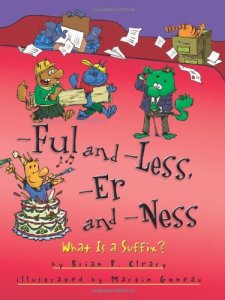 .
.
—full and —less, —er and —ness: What is a Suffix? (Words Are Categorical)
by Brian P. Cleary & Martin Goneau, illustrator
Millbrook Press
978-1-4677-0610-0
Age 32 pages
“A good paper, poem, or book isn’t written, it’s rewritten.” ~ Brian P. Cleary
“What is a Suffix? You’ll find the answer inside this book—it’s overflowing with wonderful suffixes. Brian P. Cleary’s playful rhymes and Martin Goneau’s humorous illustrations creatively present the concept of suffixes for young readers. For easy identification, key suffixes appear in color, and the comical cats reinforce each idea. —full and —less, —er and —ness: What is a Suffix turns traditional grammar lessons on end! Read and reread this book aloud and delight in the sense—and nonsense—of words.”
Opening
“Suffixes are word parts that are tacked on to a word. You’ll find a suffix at the end of farmer and preferred.”
Review
—full and —less, —er and —ness: What is a Suffix is one book of many in Cleary’s series Words are CATegorical. Kids will learn and have fun reading this funny book with the funniest illustrations. They will understand suffixes, and the probability of remembering what they learned increases with each rhyming sentence.
What is suffix? A suffix changes the meaning of the root word. In this edition of Words are CATegorical, Cleary used the four title suffixes and engaging rhyming sentences that kids will understand almost immediately.
“The E-R part of farmer speaks of someone who is doing, like the baker who is baking or the viewer who is viewing.”
Adding crazy illustrations of cats dressed as chefs and decorating cakes—one a disaster—while a third cat waits to eat the finished confection, helps kids remember what the suffix —er adds to a word with their sense of sight. The more senses that are involved, the easier it is to remember the information.
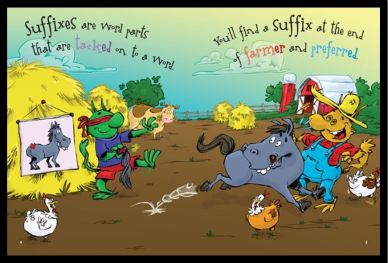
I doubt anyone could have done a better job with suffixes than Cleary and Goneau. Brian Cleary’s writing is a gift. He understands the best way to teach kids and have them truly understand and remember the concept. That would explain the success of not only this series, but nearly everything Cleary has written. Goneau’s illustrations comically present the concept so kids can actually see the suffix at work.
Homeschooling moms and dads need the Words are CATegorical series. The English language, being a difficult language to learn, comes alive in What is a Suffix? One read through and you will understand the mastery Cleary has over the English language and his ability to explain its concepts so kids can understand and remember by book’s end. It makes sense that school libraries should invest in this series. Kids having trouble grasping a language arts concept in class can read the applicable book, from the 25 thus far in the series, adding one more approach to teaching the English language. Sometimes with a new approach, kids get it and Cleary’s approach is most assuredly an “I get it” approach.
.
—FULL AND —LESS, —ER AND —NESS: WHAT IS A SUFFIX? Text copyright © 2014 by Brian P. Cleary. Illustrations copyright © 2014 by Martin Goneau. Reproduced by permission of the publisher, Millbrook Press, Minneapolis, MN.
.
Learn more about the series Words are CATegorical HERE.
Get your copy of What is a Suffix, or any of the 25 books in the series at Amazon —B&N—Millbrook Press—your local bookstore.
—B&N—Millbrook Press—your local bookstore.
.
Meet the author Brian P. Cleary at his website: http://www.brianpcleary.com/
Meet he illustrator, Martin Goneau, at his website: http://www.goneau.com/
Follow at the Millbrook Press facebook: https://www.facebook.com/millbrookpress
Millbrook Press is a division of Lerner Publishing Group
.
Also by Brian P. Cleary

The Bug in the Jug Wants a Hug
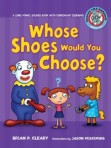
Whose Shoes Would You Choose?
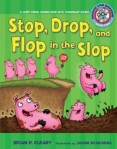
Stop, Drop, and Flop in the Slop
.
.
.
.
.
Also by Brian P. Cleary & Martin Goneau
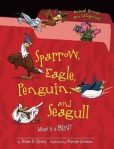
Sparrow, Eagle, Penguin, and Seagull: What Is a Bird?
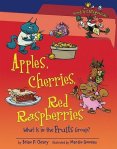
Apples, Cherries, Red Raspberries: What Is in the Fruits Group
.
.

Filed under:
5stars,
Children's Books,
Library Donated Books,
NonFiction,
Picture Book,
Poetry,
Series Tagged:
Brian P. Cleary,
children's book reviews,
languge arts,
Lerner Publishing Group,
Martin Goneau,
Millbrook Press,
suffix,
Words are CATegorical 








By:
Betsy Bird,
on 9/15/2012
Blog:
A Fuse #8 Production
(
Login to Add to MyJacketFlap)
JacketFlap tags:
nonfiction,
Millbrook Press,
nonfiction middle grade,
Lerner Publishing Group,
Rebecca L. Johnson,
2012 reviews,
2012 nonfiction,
2013 Sibert contender,
2012 nonfiction chapter books,
gross books,
Uncategorized,
Add a tag
 Zombie Makers: True Stories of Nature’s Undead
Zombie Makers: True Stories of Nature’s Undead
By Rebecca L. Johnson
Millbrook Press (an imprint of Lerner)
$30.60
ISBN: 978-0761386339
Ages 9 and up
On shelves now
There’s this podcast I like to listen to called RadioLab, which is essentially just a show for people who like kooky science but are still a little foggy on what exactly Einstein’s Theory of Relativity actually means or why the sun is hot. Science for the English majors, let’s call it. Often the show will come up with really original stories, like the guy who purposefully gave himself tapeworms to cure his asthma (it worked). That story came from a show about parasites and it was accompanied by these strange unnerving stories about insects and viruses and worms that could turn their hosts into . . . well . . . zombies, basically. And though I am a children’s librarian, the thought never occurred to me that these stories could, combined with others of the same ilk, create the world’s most awesome work of nonfiction. Fortunately for all of us, Rebecca L. Johnson has not my shortsightedness. In Zombie Makers: True Stories of Nature’s Undead you will meet a whole range of horrifying creatures. It is, without a doubt, probably the grossest book for kids I’ve ever read. And boy howdy let me tell you I have read a LOT Of gross books in my day.
What do you think of when you think of zombies? Do you think of lurching undead ready to feast on your braaaaaains? Or do you think of something a little more insidious like the REASON those zombies don’t seem to have a lot of will of their own? As it happens, zombies are real. Not in the corpse-walker sense, necessarily, but in nature there are plenty of creatures willing to make others into their mindless slaves. Meet the hairworm Paragordius Triscuspidatus, which can convince a perfectly healthy cricket to drown itself. Or Toxoplasma Gondii which, aside from being the reason you’re not supposed to let pregnant women near cat poop, turns rats into suicidal kitty lovers. Page by page author Rebecca Johnson presents us with examples of evolution gone amuck. Zombie makers exist, it’s true, and as their hosts we’d better learn as much as we can about them before they get to us next!
Zombies actually get a lot of play in children’s literature these days. Insofar as I can tell there are two ways to play them. They can’t be romantic like vampires or other members of the monster family so they must either be funny or horrifying. Funny is the route that I’d say 85% of kids’ books about zombies go. Whether you’re talking about Zombiekins or The Zombie Chasers or Undead Ed or any of the other books out there, funny is usually the way to go. I say that, but a lot of what kids want when they enter a library is to be scared. And if you can scare them with real stuff, and maybe even gross them out a little, you are gold, my friend. That’s why this book works as well as it does.
Johnson cleverly sets up the book so that readers can compare and contrast what they know about zombies, zombie talking points let’s say, with these zombie-esque diseases, parasites, and insects. I’d never really thought about Old Yeller as a zombie story, but that’s what it is, isn’t it? A beloved member of the family is bitten by something evil and suddenly the boy who loves it most must put it down before something worse happens. That’s a zombie plot, but it’s Johnson who makes you realize that rabies is just another form of zombie fun. By couching her nonfiction tale within popular zombie fiction tropes, she has an easy in with the child readership.
The writing is superb in and of itself, no doubt, but I wonder if interest in this book would be quite so high if it were not for the accompanying disquieting photographs. The book as an object is beautifully designed from start to finish, which only helps to highlight the photographs found inside. What I really liked about the photos was that they had two different ways of freaking the average reader out. On the one hand you have the photos that go for the immediate ARGGGG! reaction. I am thinking specifically of the worm. The worm that infects human beings. That makes them want to plunge themselves into the water where it breaks out of the skin and leaves the body. Alien much? The image of someone slowly and painfully removing the worm without water is enough to make you lose your lunch. But even better are the photos that elicit a slow dawning sense of horror. The fungus O. unilateralis is a clever beastie, and its greatest trick is in forcing ants to clamp onto leafs and die (but only where the temperature is just right). There’s a shot of a dead ant with a long horrible reproductive stalk emerging out of its head, spreading its spores to other innocent ants. It’s a quiet photo and lacks the urgency and pain of the leg worm shot, but it’s worse somehow. It has this brooding malice to it. You actually do not want to touch the page in the book for fear of somehow touching the fungus. That’s how effective it is.
Children’s librarians often try to lure kids into reading nonfiction by doing what we call booktalks. If you’re a good booktalker you can get your audience to fight over even the dullest looking book. Some books, however, sell themselves. Hold up this book and there’s not a child alive who won’t be instantly fascinated. Describe even one of the stories inside and you might have at last found the book they want even more than the latest edition of Guinness World Records. Informative even as it makes you want to go hide in a clean, sanitized hole somewhere, Johnson has created a clever little book that is bound to keep adult and child readers who find it, enthralled. Ick. Bleach. Awesome.
On shelves now.
Source: Galley borrowed from fellow librarian for review.
Like This? Then Try:
- Scary by Joaquin Ramon Herrera
By:
smmorris,
on 4/15/2012
Blog:
Kid Lit Reviews
(
Login to Add to MyJacketFlap)
JacketFlap tags:
NetGalley,
Lerner Publishing Group,
5stars,
4stars,
A to Z Challenge 2012,
Carolehoda Books,
Children's Books,
Millbrook Press,
patterns,
Graphic Universe,
leaves,
Add a tag
A to Z Challenge Day 14: N Netgalley is a blogger’s dream. Whether you are beginning, or just cannot get the books you need to review, NetGalley is the best place to join. Anyone who runs a book review site, any genre or age group, will find the books they need. Netgalley and Lerner Publishing [...]
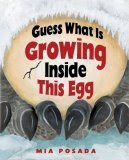 Guess What Is Growing Inside This Egg by Mia Posada
Guess What Is Growing Inside This Egg by Mia Posada
Reading level: Ages 4-8
Library Binding: 32 pages
Publisher: Millbrook Press (December 22, 2006)
Language: English
ISBN-10: 0822561921
ISBN-13: 978-0822561927
Source of book: Copy from publisher
This beautiful nonfiction book for younger children begins with an interior spread of the bottom of a white feathery animal with black talons sitting on a big egg along with this text:
This egg sits snuggly on its father's feet.
He warms it with his body's heat.
Under his feathered belly, it's cozy and warm,
Safe from the icy Antartic storm.
Can you guess what is growing inside this egg?
When you flip the page, you get the answer: an adorable baby penguin covered in gray down is sitting between its father's feet, the father proudly looking down at it. Readers then learn more factual information about the baby penguin and its parents.
The book continues in the same pattern, revealing baby alligators, ducklings, spiders, and more. At the end of the book are white life-sized shapes representing the actual size and shape of the different eggs featured in the book. In addition, a two-page spread details the 28-day incubation of a duck, with simple descriptions and diagrams that are easy for children to understand. We also learn the incubation period for the other animals in the book.
Mia Posada's detailed and expressive water color collages are enchanting and provide visual clues to help children guess the animals that are growing inside the eggs.
The rhyming verse and guessing game will keep kids entertained, and even younger children who can't quite grasp the content will love the illustrations. My little girl just pets and pets the baby sea turtles and the big, fuzzy spider egg sac. For all you teachers out there, this would be a fun choice for a science unit, and it's interactivity makes it a great book for story time.
What Other Bloggers Are Saying:
Books Together: "It's an especially good choice for reading aloud to kids of different ages!"
Read more...The Miss Rumphius Effect: "This is another great book for looking different animals that lay eggs."
Read more...If you have a review of Guess What Is Growing Inside This Egg, leave a comment with your link, and I'll post it here!

By:
Jill,
on 3/2/2008
Blog:
The Well-Read Child
(
Login to Add to MyJacketFlap)
JacketFlap tags:
art,
bob raczka,
millbrook press,
nonfiction Monday,
the art of freedom,
nonfiction Monday,
bob raczka,
the art of freedom,
millbrook press,
Add a tag
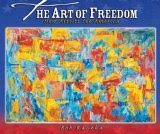 It's Nonfiction Monday! Visit the roundup at Picture Book of the Day!
It's Nonfiction Monday! Visit the roundup at Picture Book of the Day!
Reading level: Ages 4-8
Library Binding: 32 pages
Publisher: Millbrook Press
When I was young, I had little exposure or interest in art. As an adult, I'm surrounded by museums that feature art of various types, and when I visit these museums, I truly appreciate the art but wish I knew more about the history, the technique, and the artists themselves. I should have taken an art history course in college and maybe I'll still do it one of these days. If you have a child who loves art or if you'd like to expose your child to more art, Bob Raczka's Art Adventures series is a great way to introduce art without overwhelming him/her. Through paintings, portraits, photgraphs, sculpture, and easy-to-read text, Bob Raczka introduces some of the world's most famous works of art and encourages young readers to develop an appreciation for it.
A new book in the series, The Art of Freedom: How Artists See America, defines America through the eyes of famous artists. The book features 18 statements answering the question, "What is America?" Each statement is accompanied by a famous work of art that visually represents the statement. Underneath each work of art is the name of the artist, the name of the piece, and the location of where the piece is displayed. For example, beside the statement, "America is an idea," is John Trumbell's painting The Declaration of Independence, 4 July 1776.
Ansel Adams' Desert Road accompanies the statement, "America is the open road," and Georgia O'Keefe's Brooklyn Bridge is opposite the page that says, "America is man-made marvels."
The background of each page alternates between red and blue with faded stars at the top. The art and colors, combined with the inspiring statements, give the book a very patriotic feel. I can even imagine this book being a great gift choice to US military members as a way to honor their service.
Raczka did an exceptional job of choosing art to compliment the text and makes these famous works of art accessible to young readers without intimidating or overwhelming them, and I am eager to read the other books in the series.
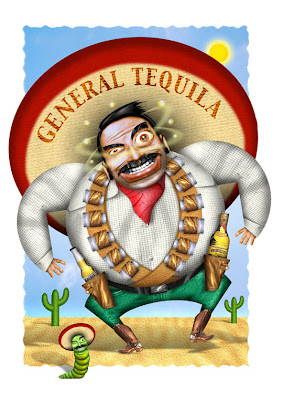
Had to get some more mileage out of this one. This illo is based on an actual bartender from Ciudad Juarez, Mexico. It was the afterparty for the National Association of Hispanic Journalists convention. We were bused from El Paso, Texas, to a rodeo arena in Juarez. Free beer. Free tequila. Free real Mexican food! General Tequila wandered around, dispensing shots for everyone. Truly a memorable experience! If I could only remember the details ...
Free tequila shots here.
—B&N—Book Depository—Lerner Books.













































I've used this title in several preschool storytimes and it's always a hit!
Abby,
It's so great to hear about people's actual experiences with the books I review, and I'm glad the preschoolers like it!
I've read this one many times to my own preschooler, and I agree that it's a good one!
Hi Charlotte,
Thanks for commenting. I'm glad you're enjoying this book with your preschooler! I definitely think it will be a huge hit in our home when my daughter gets a little older.